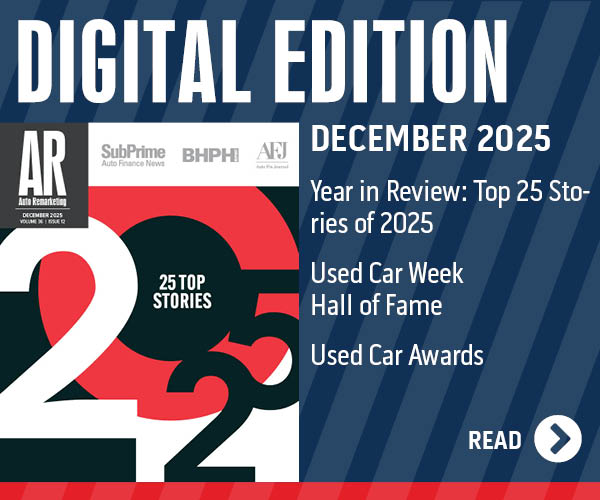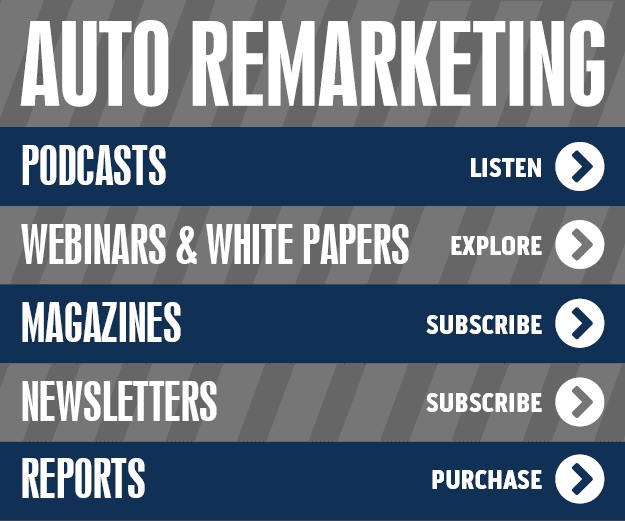Tariff-fueled new-car volatility drives used-car momentum, studies show

Image courtesy of ZeroSum.
By subscribing, you agree to receive communications from Auto Remarketing and our partners in accordance with our Privacy Policy. We may share your information with select partners and sponsors who may contact you about their products and services. You may unsubscribe at any time.
New-car inventory is falling while prices are elevated and likely to rise more as the tariff era continues.
And that’s good news for the used-car sector.
Used sales jumped almost 4% in May to their second-highest monthly total in more than a year as consumers turned to more affordable used options, according to new data from automotive marketing and data software firm ZeroSum and car-shopping platform Edmunds.
“The used-vehicle sector is continuing to benefit from the turbulence in the new-vehicle marketplace,” ZeroSum vice president of dealer success Josh Stoll said. “And with many of the OEMs ending their pricing programs and new prices starting to go up, used vehicles will become an even more important safe haven for buyers.
“Dealers should take a very close look at their inventory positions and pricing strategies compared to their competitors to maximize their sales and the profitability of those vehicles.”
ZeroSum’s June 2025 State of the Dealer report showed used-vehicle movement reached 1.37 million units for the month, up from 1.32 million in April. It’s the second-highest total since March 2024, topped only by the record 1.47 million of this March, when car buyers flooded dealerships in huge numbers to buy new and used cars before the 25% tariff on imported vehicles took effect.
Subscribe to Auto Remarketing to stay informed and stay ahead.
By subscribing, you agree to receive communications from Auto Remarketing and our partners in accordance with our Privacy Policy. We may share your information with select partners and sponsors who may contact you about their products and services. You may unsubscribe at any time.
On the new car side, that “pull-ahead” buying frenzy is beginning to tail off, the report said, with sales — though still high — dropping each of the past two months and projected to decline again in June.
New inventory sank to 2.84 million units in May, its lowest level since February 2024. And while the average marketed price decreased slightly in May, it’s still hovering right around the $50,000 mark.
Meanwhile, used cars’ momentum is still strong, a finding backed up by the results of Edmunds’ survey of 500 car shoppers who plan to purchase a vehicle in the next six months.
The survey, conducted in May, found 58% of respondents said they’re more interested in used vehicles now because of the tariffs, and data from Edmunds’ website show a marked increase in new-car shoppers looking at used vehicles since the beginning of 2025, while the number of used shoppers searching new inventory has declined at about the same rate.
But, Edmunds head of insights Jessica Caldwell said in her report, that doesn’t mean the used retail market doesn’t have its own headwinds. That includes its own affordability crunch, with ZeroSum showing the average used-car marketed price rising each of the past three months to $26,400 at the end of May, up $800 month-over-month.
“Shoppers’ movement into the used market isn’t unexpected,” Caldwell wrote, “but it will likely add pressure to an already constrained environment. Increased demand will likely drive prices higher, creating a challenging market for both consumers and dealers.
“Compounding the issue is the limited availability of near-new used inventory, a lingering consequence of historically low leasing volumes during the height of the microchip shortage three years ago. That shortage is now catching up to the used market, creating a tough situation for dealers who need more used vehicles to meet rising demand and for consumers who might now be priced out of both new and newer-used options.”
That said, the ZeroSum report showed supply in the certified pre-owned sector, which is dominated by late-model vehicles, steadily increasing since the fall, soaring in May to 249,000 units, the most in more than two years.
On the down side, CPO sales are sinking quickly, from 200,000 units in March to 180,000 in May, with June sales projected to fall to 163,000. The CPO turn rate plummeted from 81% in April to just 70% in May — the lowest since November 2023 — which the report attributed to “increasing supply and waning demand.” Nonethless, prices remained steady, averaging $38,000.
“Similar to the used-vehicle sector, certified vehicles can be positioned as an affordable alternative to new vehicles that are already challenged by tariff-related price increases,” the report said. “This sector is currently facing some challenges in terms of supply vs. demand, however. With turn rates falling to recent lows, dealers must be able to properly prioritize and promote these vehicles to ensure they stay attractive to consumers.
“Managing this market sector will become increasingly important as consumers search for a bridge between the reliability of new and the affordability of used.”
In the Edmunds report, Caldwell said the biggest issues in today’s tariff-driven retail market aren’t just about supply, demand and pricing.
Tariffs, she wrote, “may be changing the psychology of the car-buying process in real time. And as legal challenges continue to test the boundaries of U.S. trade policy, consumers and dealers alike must stay agile in an environment where uncertainty could outlast the tariffs themselves.”
ZeroSum’s full State of the Dealer report can be downloaded here.


